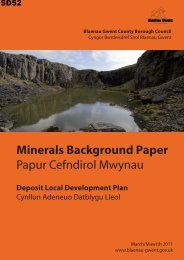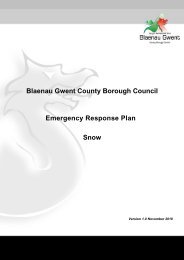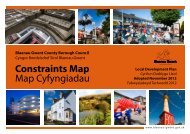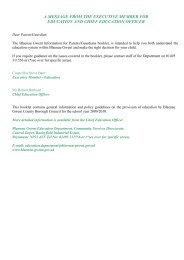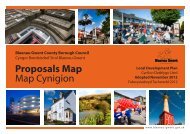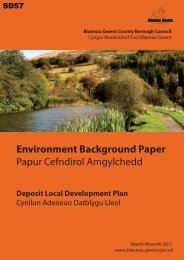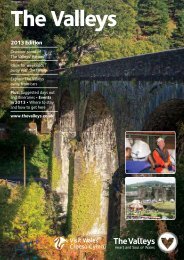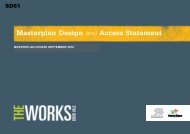Planning Policy Wales - Brecon Beacons National Park
Planning Policy Wales - Brecon Beacons National Park
Planning Policy Wales - Brecon Beacons National Park
Create successful ePaper yourself
Turn your PDF publications into a flip-book with our unique Google optimized e-Paper software.
12.2.2 The EU Water Framework Directive 3 imposes requirements for the integrated planning and<br />
management of water which have implications for land use planning in both urban and rural areas.<br />
12.3 Development plans and water<br />
12.3.1 Development plans should take water-related issues into account from an early stage in<br />
the process of identifying land for development and redevelopment. New development should<br />
be located and its implementation planned in such a way as to allow for sustainable provision<br />
of water services, in particular minimising vulnerability to the impacts of climate change. Design<br />
approaches and techniques that improve water efficiency 4 and minimise adverse impacts on water<br />
resources, surface water quality, the ecology of rivers and groundwater should be encouraged<br />
(see Sections 13.3 to 13.4 and 13.10 to13.12).<br />
12.4 Development control and water<br />
12.4.1 The adequacy of water supply and the sewage infrastructure are material in considering<br />
planning applications and appeals. The need to balance the growing demand for water with the<br />
needs of the environment is crucial. Even where there is theoretical capacity, timely investment<br />
in infrastructure is required to ensure that new development does not adversely affect water<br />
supplies, water quality or sewerage. These issues require early identification when locating future<br />
development. Local planning authorities should therefore encourage the use of sites where existing<br />
water supply and/or drainage provision problems can be solved and seek to avoid the use of sites<br />
where adequate water supply and/or drainage provision is unlikely to be achieved.<br />
12.4.2 Development proposals in sewered areas must connect to the main sewer, and it will<br />
be necessary for developers to demonstrate to local planning authorities that their proposal site<br />
can connect to the nearest main sewer. To ensure consistency of design and facilitate long-term<br />
maintenance, sewers should be built to an adoptable standard, and developers should consult<br />
sewerage undertakers in the early stages of design and planning 5 . (See Section 4.10)<br />
12.4.3 Development proposing the use of non-mains drainage schemes will only be considered<br />
acceptable where connection to the main sewer is not feasible 6 . Non-mains sewage proposals, such<br />
as septic tanks and surface water drainage schemes, included in development applications should<br />
be the subject of an assessment of their effects on the environment, amenity and public health in<br />
the locality, in accordance with the criteria set out in Circular 10/99, prior to the determination of<br />
the planning application. A catchment wide perspective should be adopted including the use of<br />
Sustainable Urban Drainage Systems, where appropriate 7 (see Sections 13.3 to 13.4).<br />
166<br />
<strong>Planning</strong> <strong>Policy</strong> <strong>Wales</strong> Edition 3 - July 2010 - Chapter 12 Infrastructure and Services


